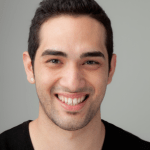Gravity’s force is defined by the gravitational factor G. It is the force that pushes the Earth into its orbit around the sun or makes fruits fall to the ground. It is a component of Isaac Newton’s approximately 300-year-old universal gravitational law. Mathematically, the constant cannot be derived; experimentation must be used.
Even though scientists have conducted several experiments throughout the years to estimate G’s value, the present finding is insufficient. The numbers for all the fundamental natural constants, such as the speed and the speed of light in a medium, are still more precise.
Gravity seems to be a very challenging force to measure. It cannot be isolated; thus this is the case. By calculating the difference in gravity between both the two bodies, you may also calculate the impact on other bodies.
The Department of Mechanical and Process Engineering at ETH Zurich’s Jurg Dual states that the only way to resolve this issue was to quantify the gravitational coefficient using a wide variety of techniques. He carried out a new experiment with his colleagues, recalculating the gravitational steady state. Their research was featured in Nature Physics.
A new experiment in a fortification that is older
In an effort to rule out potential sources of interference, Dual’s crew set up their measurement apparatus close to the Furggels castle. In vacuum chambers, two beams were suspended. Gravitational cooperation caused the second beam to move very little after the first one vibrated (in picometres, which is one-trillionth of one meter). The researchers used laser instruments to measure the mobility and dynamic impact of the two beams.
The value that the researchers determined using this method is 2.2% higher than the actual value currently published by the Council on Data for Technology and Science. Dual acknowledges that there is a lot of uncertainty about this new value. “A large degree of uncertainty reduction is required to obtain a trustworthy value.” We are currently collecting data in a redesigned experimental setup to enable an even more accurate calculation of the constant “G”. Initial findings are available; however, they have not yet been published. Dual confirms that we’re heading in the correct direction.
The experiment can be managed remotely by researchers from Zurich. By doing this, any disruptions that might be caused by using on workers are eliminated. The team can see the measurement data whenever they want.
A look back at the universe’s past
Dual thinks the benefit of the new technique is that it uses spinning beams to assess gravity dynamically. In contrast to static measurements, he stated, “Dynamic measures don’t care that it’s impossible to isolate the gravitational influence of other bodies.” He expects that the research will help him and his team figure out the gravity problem. Science has a lot more to learn about gravitation and the experiments that support it.
For instance, a deeper knowledge of gravity would enhance our ability to decipher gravitational-wave signals.
The US LIGO observatories are where this wave was initially spotted. They originated from the merging of two black holes in orbit, some 1.3 billion light-years from Earth. Scientists have recorded dozens of similar events since then; if they could all be traced, they would offer new insights into both the universe and its past.
A defining accomplishment for a career
In 1991, Dual began developing techniques for calculating gravitational constants. He had, however, occasionally postponed his work. After gravitational waves were found in LIGO in 2018, Dual picked up his studies again. The project team established the Furggels Fortress laboratory in 2019 and started further research.
Scientists and a professor of statistics were on Dual’s team. Infrastructure specialists like cleanroom experts, an electrician, and a mechanic were also needed for the project. “This experiment wouldn’t have been accomplished without years and collective effort,” says Dual. At the end of July, Dual will become an emeritus professor. His final speech has been delivered. A positive example would be a great and fulfilling way for him to end his career, he said.




